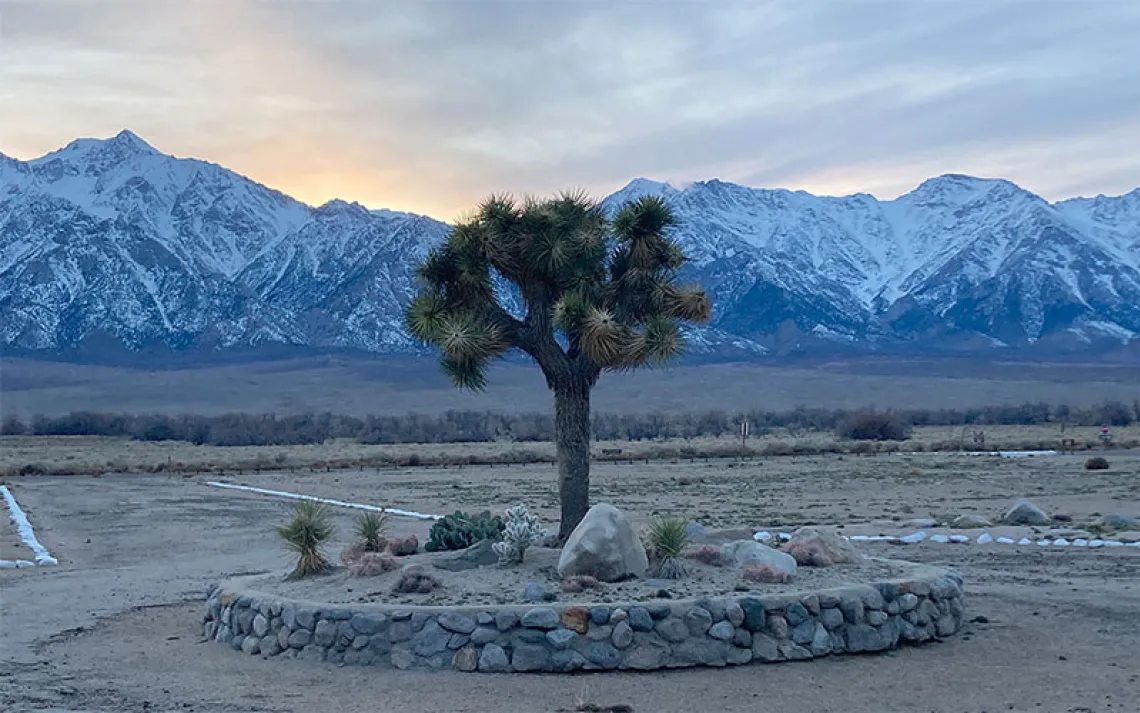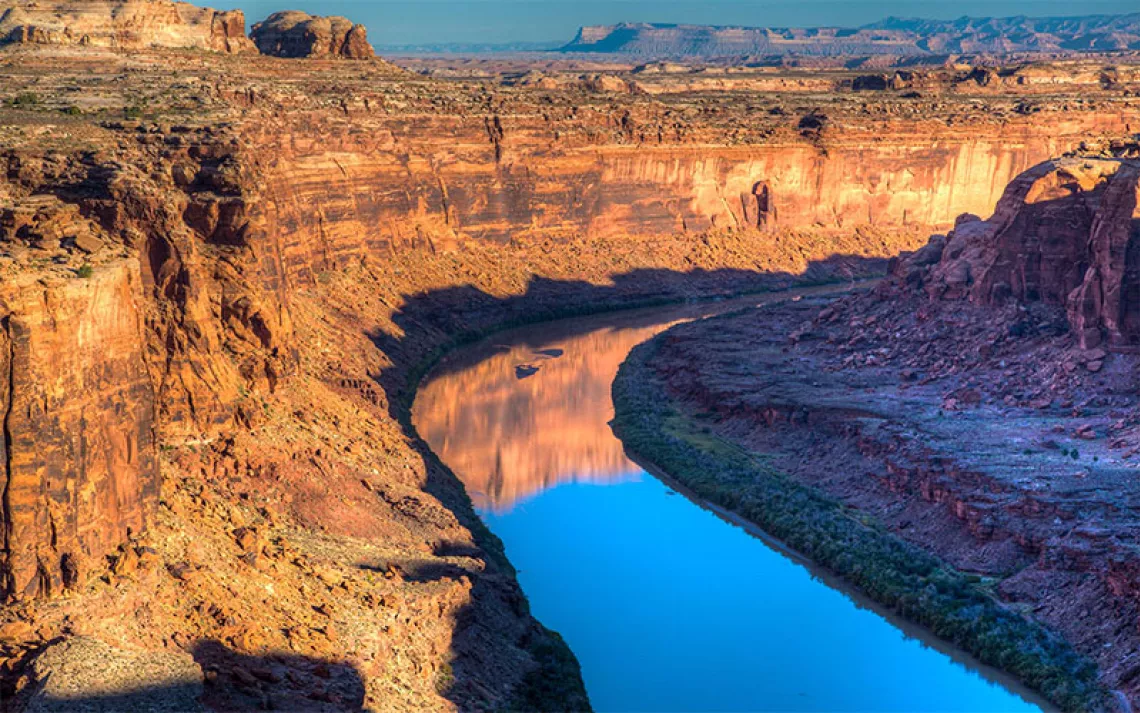Nine National Park Sites Where You Can Celebrate Black History Month

Photo courtesy of African American NHS
Not sure how to celebrate Black History Month? Brushing up on important moments in history is a good place to start, and what better way to do it than to visit where they occurred. Sites and stories significant to the African American experience are scattered throughout the United States, and our National Park Service preserves many of them. Chances are, one of the following nine spots is near you (if not, look for others in the extensive lists compiled by the National Park Service and BlackPast.org).
Harpers Ferry National Historical Park (Harpers Ferry, West Virginia)
On October 16, 1859, abolitionist John Brown and his 21-man “army of liberation” seized the United States Armory and Arsenal at Harpers Ferry. He intended to use the weapons there to arm a slave rebellion, but he was captured by U.S. Marines just days later. During the Civil War, Harpers Ferry became a Union garrison town where runaway slaves sought refuge. Today, the park is home to historic reenactments and trade workshops, where you can experience the life and skills of the era.
Mammoth Cave National Park (Mammoth Cave, Kentucky)
Many of the first guides at Mammoth Cave were African Americans, both enslaved and freemen. They took tourists through the cave and discovered miles of new routes and areas within. The stories and contributions of legendary guides like Stephen Bishop, Materson Bransford, and Will Garvin have been recorded and preserved by the park. On ranger-led tours, you can follow the paths they established to rooms of great stalactites and bottomless pits.
Boston African American National Historic Site (Boston, Massachusetts)
The Black Heritage Trail® takes visitors to the historic sites of Boston’s 19th-century African American community. Weaving through historic Beacon Hill, the tour includes sites like a memorial to the Massachusetts 54th Regiment, the first documented African American regiment, and the African Meeting House, the oldest standing black church in the country. On the tour, you can learn history from the abolitionist to early civil rights movements.
San Francisco Maritime National Historical Park (San Francisco, California)
In the 1870s, San Francisco was the center of the whaling industry, which became the main livelihood for African American seamen on the West Coast until World War I. William T. Shorey, born in Barbados to a Scottish sugar planter and an Indian Creole woman, was one of the last whaling captains based out of San Francisco. During World War II, the opportunity to work as shipbuilders brought one of the largest migrations of African Americans to the Bay Area—from 20,000 individuals in 1940 to over 60,000 in 1945. At the park, you can tour the historic ships at Hyde Street Pier and join ranger-led tours and presentations.
Yosemite National Park (California, 3 hours east of Sacramento)
African American soldiers, nicknamed the Buffalo Soldiers by Cheyenne and other Plains tribes during the Indian Wars, were among the first park rangers of Yosemite National Park and Sequoia National Park. They helped remove poachers and timber thieves, extinguish fires, end illegal grazing, and build park roads and infrastructure. During your visit, you can listen to ranger Shelton Johnston’s “A Buffalo Soldier Speaks” podcast while taking in the beauty of the Sierra Nevada.
Biscayne National Park (Florida, off the coast of the Miami Metropolitan area)
The Jones family worked and lived on Porgy and Old Rhodes Key of Biscayne Bay for close to a century, becoming one of the largest producers of pineapples and key limes on the east coast of Florida. Wanting to save the land from rampant Florida development, Lancelot Jones sold it to the National Park Service, which granted him the right to live the rest of his days on the islands. In the later part of his life, Lancelot would share his knowledge of the islands with students and visitors at the local ranger station, and in his honor Florida declared October 13 “Lancelot Jones Day.” Today, you can take a boat tour to see dolphins, manatees, and other marine wildlife that continue to call the the bay and islands home.

Make every day an Earth Day
Get articles like this one sent directly to your inbox.
With this action you affirm you want to receive Sierra Club communications and may vote on policy designated by the Sierra Club Board.
Timucuan Ecological and Historic Preserve (Jacksonville, Florida)
At the preserve, the Kingsley plantation tells the story of the slave community and planter families who lived and labored there. From 1765 to 1865, Fort George Island was the site of several different plantation operations, producing commodities like indigo, sugar, and sea island cotton. Today, you can see the remains of 23 of the 32 original cabins where the enslaved men, women, and children lived, and learn about the troubling history of the plantation era.
New Orleans Jazz National Historical Park (New Orleans, Louisiana)
This isn’t your typical national park. The New Orleans Jazz National Historical Park preserves and promotes the historic sites and music traditions of New Orleans. Jazz was born in New Orleans out of a rich tradition of ethnic and cultural exchange but was particularly cultivated by the African American community. At the park, you can learn about the lives of jazz greats like Louis Armstrong, Sidney Bechet, and Bessie Smith—and listen to live performances hosted by the park.
Selma To Montgomery National Historic Trail (54 miles across Alabama)
In 1965, civil rights activists—including Martin Luther King, Jr.—organized three marches from Selma to Montgomery to bring attention to racial injustice in Alabama. The marches were instrumental to the passing of the Voting Rights Act that year. You can retrace the route and stop at significant sites along the way, including the Selma bridge, Montgomery's Tent City, and several interpretive centers.
 The Magazine of The Sierra Club
The Magazine of The Sierra Club



